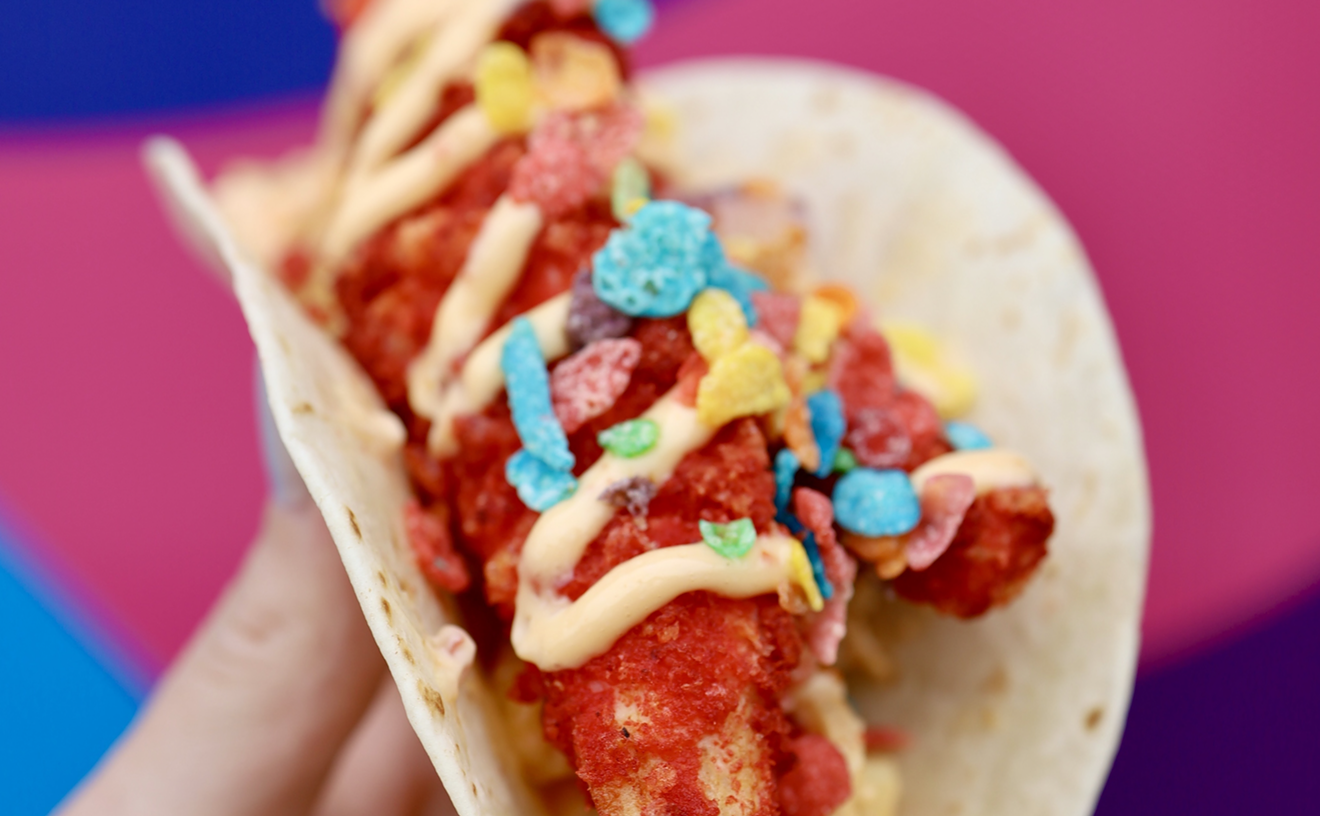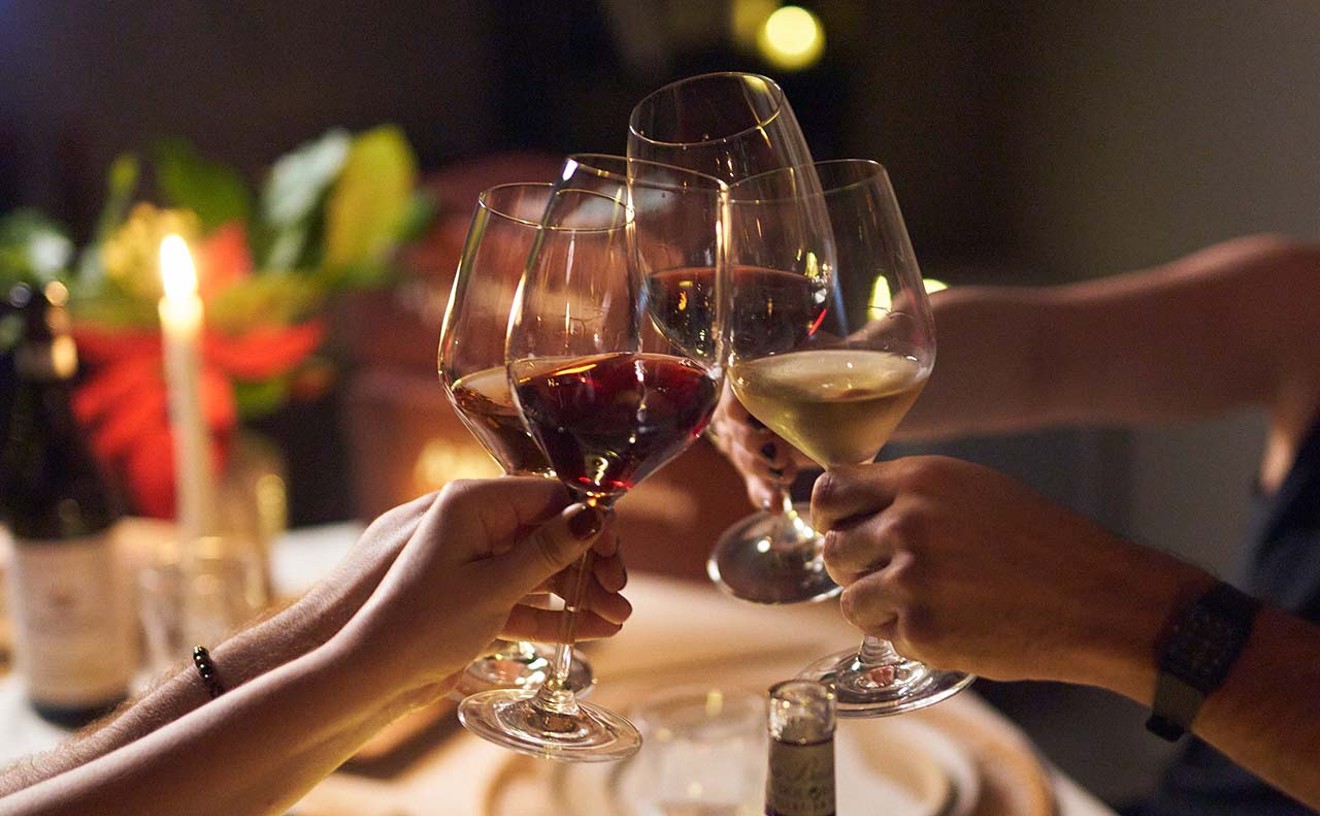But ask a Puerto Rican or Cuban (crossover influences are especially strong down here, since so many early immigrants from Cuba to Miami spent transitional years in Puerto Rico) to compare their grandmother's cooking to restaurant pros and -- hey, eat your corazon out, Douglas Rodriguez. So it probably was not fair to bring along my Puerto Rican chef friend on my first review meal at Old San Juan. No way was the place's tembleque going to measure up to her abuela's. Still I didn't expect her to like nothing.
Frankly, though, I must admit that I'd heard numerous wildly varying reports on Old San Juan (formerly the also Puerto Rican but humbler Isla del Encanto, which several years ago got new owners and a new, more upscale look) before going there -- much more opinionated pro-and-con controversy than usual. Pro people said the Puerto Rican food was better than in Puerto Rico. Furious cons found the food not good, or not bad but overpriced for what it was. "It's not gourmet," admitted another PR/Cuban friend who lived on the island through high school and, prior to doing a review dinner with me, had gone to Old San Juan three times for hits of old favorite foods. "But you cannot find some of these typical dishes anywhere else."
Not quite true. Benny's, out on 107th Avenue, may not be much in the décor department, but in my opinion has better mofongo. Virtually the Puerto Rican national anthem, this combination of mashed tostones (twice-fried green plantains), a little raw garlic, and a lot of salt pork cracklings plus additional rendered pork fat has been updated in the last half-dozen years by Nuevo PR chefs on the island and stateside with lighter carbs like yuca or malanga, and more elegant fats. Norman Van Aken's version uses ripe plantains and foie gras. But even good traditional versions I've had were less dry and more whipped than Old San Juan's leaden mash. The dryness was helped, though not enough, by an apply-it-yourself bowl of weak, watery chicken broth that the plantains sucked up like a parched sponge. Additionally, a small saucer of six equally dried-out medium shrimps did not justify mofongo con camarones' $15.95 price tag (except that it beat $23.95 for mofongo marinero).
Lechon asado, served with passable arroz con gandules (rice with pigeon peas) and okay if tough tostones, was even more dried out, and so salty the roast pork chunks were near-inedible. The same, sadly, was true of mahi-mahi; the sizable fillet was served under a blanket of a typical salsa criolla of sautéed onion, peppers, and tomatoes that would have been very tasty had oversalting not obliterated all other flavors. Fortunately the fish came with a supersized and super side of mashed yautia (malanga), similar to the taro root from which Hawaiians make poi and just as unappetizingly grayish in color -- but terrific in taste, less starchy than mashed potatoes and with pronounced natural nuttiness.
Also cooked to desiccation, perhaps because the pieces were skinless: chicarron de pollo. The bone-in pieces came with a small undressed salad (oil and vinegar on the side) and, normally, tostones, but we were allowed to substitute some nicely sautéed sweet plantains that helped moisten the fried poultry.
Pasteles are like Mexican cornmeal tamales, and when the steamed plantain/yautia packets are moist, light, and containing treasures like raisins and chickpeas, as my chef buddy's grandma's do, they are as good as Mexico's best. Unfortunately these hard, dry dumplings contained only a great deal of dry pork. And while pasteles are admittedly a real pain to make, a price of $12.95 for two was outrageous.
A price of $4.75 for two alcapurrias de jueyes might not have been too much had the fritters been packed with moist lump crab. But the crabmeat was very sparse, and very stringy. Better tasting and better value were bacalaitos, three flat, fried fritters of dried salt (but not too salty) cod, and sorullitos, four fairly light finger-shaped cornmeal fritters stuffed with yellow cheddarish cheese.
Two tasty dishes that came on the Sunday brunch buffet were a rich beef stew and piñon. The latter, Puerto Rican lasagna, substituted sweet plantain slices for pasta layers, and its ground beef/whipped egg filling was flavorful despite green beans that tasted canned, though they could have been merely overcooked. Most of the buffet's other four entrées featured relatively too many inexpensive carbs -- a thick rice stew with pigeon peas; an arroz con pollo heavy on rice, light on poultry -- to justify a $22 tag, as the relatively larger dinner crowd seemed to agree.
All three desserts tried were tasty if very sweet: two takes on bien me sabe, traditional Puerto Rican coconut/cream cake (one flavored with piña colada, the other with Dominican orange liqueur), and tembleque, a sort of coconut Bavarian cream. My personal favorite, though, was a small but potent glass of coquito al San Juan, Puerto Rico's unbeatable version of eggnog. No, no, trust me: You only think you don't like eggnog. Try this coquito.
Menus are fully bilingual, which is useful since no restaurant personnel are, except owner Tom MacManus, a most congenial, bilingually fluent host who bent over backward to be everywhere, do everything, and answer all questions thoroughly. When other servers took over, things slowed down considerably -- and not necessarily because of the language barrier. At one meal, for instance, depleted water glasses remained empty for an hour, until a croaked request for agua at meal's end elicited a refill from a server who seemed agreeable but astonished to be asked such a thing in any language.










